Orbits
The five THEMIS spacecraft (probes) were placed in highly elliptical orbits where the spacecraft line up at apogee every four days. The apogee rotates slowly around the Earth to cover the dayside, dawnside, nightside, and duskside of the magnetosphere. Initially, right after launch in 2007, the 5 THEMIS spacecraft were lined up in the same orbit. Since 2011, P1 and P2 have become ARTEMIS and orbit the moon, while the 3 remaining Earth-orbiting THEMIS probes are able to synergize observations with other Heliophysics System Observatory (HSO) missions such as Van Allen Probes (VAP), Magnetospheric Multiscale (MMS), CLUSTER (CL), Geotail (GT) and Arase (ARA).
In the dusk science phase the apogee of P3, P4, and P5 are approximately 13 Re. MMS is in the tail. THM is an MMS-resonant string-of-pearls, studying connections to both magnetopause and inner magnetosphere.
In the tail science phase the apogee of P3, P4, and P5 are approximately 13 Re. MMS is in the dawn sector. THM-MMS on resonant orbits, to study dayside-nightside reconnection simultaneously. From its kinetic-scale separations THM explores the dissipation of flow and magnetic energy in the tail while MMS captures their effects in the inner magnetosphere. Once every other MMS orbit, MMS is at the reconnection point and THM is at magnetopause to capture day/night connections. The other MMS orbit THM is at in-bound leg (string of pearls) studying link of Rx/injections to inner magnetosphere over a wide range of L-shells.
In the dawn science phase the apogee of P3, P4, and P5 are approximately 12-16 Re. MMS is in the dayside sector. THM-MMS on resonant orbits, to study the dominant energy conversion in the tail from kinetic scale separations while MMS studies the link to inner magnetosphere.
In the dayside science phase the apogee of P3, P4, and P5 are approximately 12-16 Re. MMS is in the dusk sector on resonant orbits, to study the evolution of reconnection and its relationship to the growth of low-latitude boundary layer instabilities, such as Kelvin-Helmholtz.
In the dusk science phase the apogee of P3, P4, and P5 are approximately 12-16 Re. THM-MMS on resonant orbits, to study dayside-nightside reconnection simultaneously.
In the tail science phase the apogee of P3, P4, and P5 are approximately 12-16 Re. MMS is at opposition in the dawn sector. THM-MMS on resonant orbits, to study energy conversion further out in the magnetotail, as ART+MMS provide the high-fidelity solar wind and its variations due to foreshock interactions. Near perigee, MMS studies effects of injections. Two or three THM-GBO conjunctions (once per 4 or 8 days) also explore the dominant energy conversion in the tail and the drivers of nightside reconnection, while MMS captures the global drivers of these phenomena at the dayside.
In the dayside science phase the apogee of P3, P4, and P5 are approximately 12 Re. The probes are separated by 1000 km to a few Earth radii at apogee. MMS is at opposition in the dayside. THM-MMS on resonant orbits, to study dayside-nightside reconnection simultaneously.
In the dayside science phase the apogee of P3, P4, and P5 are approximately 12 Re. The probes are separated by 1000 km to a few Earth radii at apogee. MMS is at opposition in the tail. THM-MMS on resonant orbits, to study dayside-nightside reconnection simultaneously.
In the dusk science phase the apogee of P3, P4, and P5 are approximately 12 Re. The probes are separated by 1000 km to a few Earth radii at apogee. MMS is at opposition in the dawn sector, and VAP is in the tail sector. THM is on MMS-resonant orbits, exploring asymmetries of reconnection and drivers of magnetopause boundary layer flows.
In the tail science phase the apogee of P3, P4, and P5 are approximately 12 Re. The probes are separated by 1000 km to a few Earth radii at apogee. THM on sidereal period resonances, together with GBOs studies reconnection fronts, injections, links to VAP in the dawn sector; MMS studies drivers at opposition in the dayside.
In the dawn science phase the apogee of P3, P4, and P5 are approximately 12 Re. The probes are separated by 1000 km to a few Earth radii at apogee. MMS is at opposition in the dusk sector, and VAP is in the dayside sector. THM is on MMS-resonant orbits, exploring asymmetries of reconnection and drivers of magnetopause boundary layer flows.
In the dayside science phase the apogee of P3, P4, and P5 are approximately 12 Re. The probes are separated by 1000 km to a few Earth radii at apogee with MMS at opposition in the tail. THM and MMS study dayside and nightside reconnection simultaneously; VAP determines geoeffectiveness in the dusk sector.
In the dusk science phase the apogee of P3, P4, and P5 are approximately 12 Re. The probes are separated by 1000 km to a few Earth radii at apogee. MMS is at opposition in the dawn sector in ascend phase (1x). L-shell crossings determine particle sources and wave contribution to inner magntosphere particle flux growth/decay. VAP is in the dusk sector.
In the tail science phase the apogee of P3, P4, and P5 are approximately 12 Re. The probes are separated by 1000 km to a few Earth radii at apogee, to detect reconnection fronts, electron injections, and links to VAP waves in the dusk sector. MMS is at opposition in the dayside, and VAP is in the dusk sector.
In the dawn science phase the apogee of P3, P4, and P5 are approximately 12 Re. The probes are separated by 1000 km to a few Earth radii at apogee. MMS is at opposition in the dusk sector, and VAP is in the tail sector. Coordinated L-shell crossings determine particle sources and wave contribution to inner magnetosphere particle flux growth/decay.
In the dayside science phase the apogee of P3, P4, and P5 are approximately 12 Re. The probes are separated by 1000 km to a few Earth radii at apogee. MMS is at opposition in the tail at the plasma sheet boundary studying flux transport, and connects to VAP in the dawn sector.
In the dusk science phase the apogee of P3, P4, and P5 are approximately 12 Re. The probes are separated by 1000 km to a few Earth radii at apogee. MMS is at opposition in dawn, and VAP is in the dayside sector.
In the tail science phase the apogee of P3, P4, and P5 are approximately 12 Re. The probes are separated by 1000 km to a few Earth radii at apogee. MMS is at opposition in dayside, and VAP is in the dusk sector.
In the dawn science phase the apogee of the P3, P4, and P5 orbits are on the dawnside of the magnetosphere. Probes 3 and 4 have apogees at 12 Re, and Probe 5 has an apogee at 13 Re. MMS preliminary orbital maneuvers to coordinate with THEMIS observations.
In the dayside science phase the apogees of the P3, P4, and P5 orbits are approximately 12 Re. The probes are separated by approximately 500 km to 3000 km. Projected MMS launch and preliminary orbital maneuvers, systems checkout.
In the dusk science phase the apogees of the P3, P4, and P5 orbits are approximately 12 Re and point towards the duskside sector.
In the tail science phase the apogee of P3, P4, and P5 are approximately 12 Re. The probes are separated by approximately 500 km to 3000 km.
In the dawn science phase the apogee of the P3, P4, and P5 orbits are on the dawnside of the magnetosphere. Probes 3 and 4 have apogees at 12 Re, and Probe 5 has an apogee at 13 Re.
In the dayside science phase the apogees of the P3, P4, and P5 orbits are approximately 12 Re. The probes are separated by approximately 500 km to 3000 km.
In the dusk science phase the apogees of the P3, P4, and P5 orbits are approximately 12 Re and point towards the duskside sector.
In the tail science phase the apogee of P3, P4, and P5 are approximately 12 Re. The probes are separated by approximately 500 km to 3000 km.
In the dawn science phase the apogee of the P3, P4, and P5 orbits are on the dawnside of the magnetosphere. Probes 3 and 4 have apogees at 12 Re, and Probe 5 has an apogee at 13 Re.
In the dayside science phase the apogees of the P3, P4, and P5 orbits are approximately 12 Re. The probes are separated by approximately 500 km to 3000 km.
In the dusk science phase the apogees of the P3, P4, and P5 orbits are approximately 12 Re and point towards the duskside sector.
In the tail science phase the apogee of P3, P4, and P5 are approximately 12 Re. The probes are separated by approximately 500 km to 3000 km.
In the dawn science phase the apogee of the P3, P4, and P5 orbits are on the dawnside of the magnetosphere. Probes 3 and 4 have apogees at 12 Re, and Probe 5 has an apogee at 13 Re. P1 and P2 have now become ARTEMIS.
In the dayside science phase the apogees of the P3, P4, and P5 orbits are approximately 12 Re. The probes are separated by approximately 500 km to 3000 km.
In the dusk science phase the apogees of the P3, P4, and P5 orbits are approximately 12 Re and point towards the duskside sector.
In the tail science phase the apogee of P3, P4, and P5 are approximately 12 Re. The probes are separated by approximately 500 km to 3000 km.
In the dawn science phase the apogee of the P3, P4, and P5 orbits are on the dawnside of the magnetosphere. Probes 3 and 4 have apogees at 12 Re, and Probe 5 has an apogee at 13 Re. P1 and P2 have now become ARTEMIS.
In the dayside science phase the apogees of the P3, P4, and P5 orbits are approximately 12 Re. The probes are separated by approximately 500 km to 3000 km.
In the dusk science phase the apogees of the P3, P4, and P5 orbits are approximately 12 Re and point towards the duskside sector.
In the tail science phase the apogee of P3, P4, and P5 are approximately 12 Re. The probes are separated by approximately 500 km to 3000 km.
In the dawn science phase the apogee of the P3, P4, and P5 orbits are on the dawnside of the magnetosphere. Probes 3 and 4 have apogees at 12 Re, and Probe 5 has an apogee at 13 Re. P1 and P2 have now become ARTEMIS.
In the dayside science phase the apogee of the orbits are on the dayside of the magnetosphere. Probe 1 apogee is at 30 Re, Probe 2 at 20 Re, Probes 3 and 4 at 12 Re, and Probe 5 at 13 Re.
The radiation belt science phase is also called the “Dusk phase” because the apogee of the orbits are on the dusk side of the magnetosphere. Probe 1 apogee is at 30 Re, Probe 2 at 20 Re, Probes 3, 4, and 5 at 12 Re.
In the tail science phase the apogee of the orbits are in the magnetotail. Probe 1 apogee is at 30 Re, Probe 2 at 20 Re, Probes 3, 4, and 5 at 12 Re.
The apogee of the orbits is on the dawn side of the magnetosphere. Probe 1 apogee is at 30 Re, Probe 2 at 20 Re, Probes 3, 4, and 5 at 12 Re.
Initial Mission Phase THEMIS orbit parameters:
- Injection: 1.07 x 15.4 Re (all probes in the same orbit)
- Probe 1: 1.3 x 30 Re
- Probe 2: 1.2 x 20 Re
- Probes 3 and 4: 1.5 x 12 Re
- Probe 5: 1.5 x 10 Re
The different orbit configurations define the five stages of the mission:
Right after launch all spacecraft are lined up in the same orbit with a 15.4 Re apogee.
The orbit placement phase is also called “Dawn phase” because the apogee of the orbits are on the dawn side of the magnetosphere. Probe 1 apogee is at 30 Re, Probe 2 at 20 Re, Probes 3 and 4 at 12 Re, and Probe 5 at 10 Re.
In the tail science phase the apogee of the orbits are in the magnetotail. Probe 1 apogee is at 30 Re, Probe 2 at 20 Re, Probes 3 and 4 at 12 Re, and Probe 5 at 10 Re.
|
Major (4 day, P1, P2 and inner probe) Conjunctions Minor (2 day, P2 and inner probe) Conjunctions Daily (inner probes with GBOs) Conjunctions ->00:30-12:30UT |
The radiation belt science phase is also called the “Dusk phase” because the apogee of the orbits are on the dusk side of the magnetosphere. Probe 1 apogee is at 30 Re, Probe 2 at 20 Re, Probes 3 and 4 at 12 Re, and Probe 5 at 10 Re.
In the dayside science phase the apogee of the orbits are on the dayside of the magnetosphere. Probe 1 apogee is at 30 Re, Probe 2 at 20 Re, Probes 3 and 4 at 12 Re, and Probe 5 at 10 Re.
|
Major (8 day, 5 probe) Conjunctions Major (4 day, P1, P2 and inner probe) Conjunctions Minor (2 day, P2 and inner probe) Conjunctions Daily (inner probes with GBOs) Conjunctions |







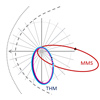
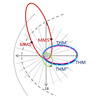
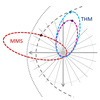
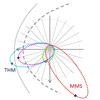
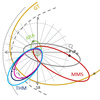
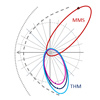










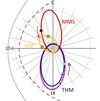
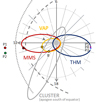
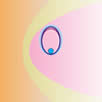 Stage 30: Dawn Phase, VAP Conjunctions
Stage 30: Dawn Phase, VAP Conjunctions Stage 29: Dayside Science Phase, VAP Conjunctions
Stage 29: Dayside Science Phase, VAP Conjunctions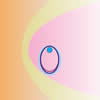 Stage 28: Dusk Phase, Radiation Belt Science, VAP Conjunctions
Stage 28: Dusk Phase, Radiation Belt Science, VAP Conjunctions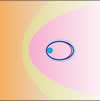 Stage 27: Tail Science Phase, VAP Conjunctions
Stage 27: Tail Science Phase, VAP Conjunctions Stage 9: Dayside Science Phase
Stage 9: Dayside Science Phase Stage 8: Radiation Belt Science Phase
Stage 8: Radiation Belt Science Phase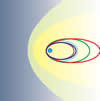 Stage 7: Tail Science Phase
Stage 7: Tail Science Phase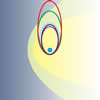 Stage 6: Dawn Phase
Stage 6: Dawn Phase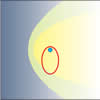 Stage 1: Injection or “Coast” Phase
Stage 1: Injection or “Coast” Phase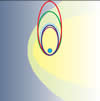 Stage 2: Orbit Placement Phase
Stage 2: Orbit Placement Phase